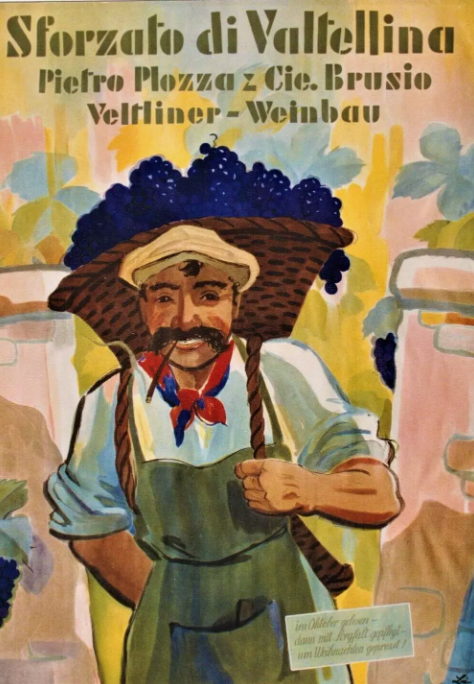
Oh my Valtellina, you wonderful thing
"Rosa, Rosa, Rosa, Rosa."
Our love of Valtellina is timeless. At the very least, on a par with Doug Judy's infatuation with Rosa Diaz in binge-worthy tv show Brooklyn Nine-Nine. More accurately, it's a love that transcends heaven and earth. One that enchants the senses and captures the soul. Ahem!
Alrite, enough of the gushy stuff. Let's get down to it. When we talk about terroir and its impact on wine, there are few more extreme examples than from this part of Italy. For all its beauty, nestled off the beaten track in the North West of the country, set within breath-taking Alpine landscape, this is home to proper winemaking. Conditions here for ripening grapes is ideal, but the process from grape to bottle is oh so demanding. The combination of high elevations, steep slopes and ancient terraced vineyards leads to slow, back-breaking work that takes place by hand. Due to its precarious nature, this is a location where automation and machinery appear few and far between.
As winemaking goes, it has an interesting history, with evidence of production going back to Roman times, and the fact it was considered part of Switzerland for three centuries, which meant they have historically been the biggest consumer of its wines. Well, until tax changes in the 1980s put paid to that!
For location, it is picture book dramatic, and quite unlike many other places. The territory is perfectly suited to high quality viticulture, with the elements bringing harmony and balance to ecosystems within the vineyards. Unsurprisingly, with it being one of Italy's smallest wine zones, production is modest, having seen land under vine reduce dramatically during the past fifty years. Today, just under five hundred hectares are located in a narrow valley and covered by 5 distinguished subzones. Nebbiolo (Chiavennasca to the locals) is king, and markedly different to the styles found in the more famous Barolo and Barbaresco wines.
We've long championed Nebbiolo, which will always have a place close to our heart, but the good news is that we now don't have to invoke Piemonte's best to fully enjoy it. This sanctuary of viticulture has quietly blossomed into a haven for those who seek wines that conjure tradition, terroir, and show real pedigree. Across the 80 odd producers (having grown from as little as 20 in a couple of decades), it is pleasing to see there is an essence of humility and togetherness among people that are committed to being patient and ensuring they are not influenced by passing fashions and conventional international tastes.
Valtellina is home to two DOCG classifications in the form of Valtellina Superiore and Sforzata Valtellina. Similarities with Valpolicella are evident, with the latter name given to describe the art of making wine in a passito method that sees wine produced from dried grapes in a rich, dessert wine style. Truth be told, we are happy to avoid this type of wine in favour of the former, which tastes far fresher, refined and elegant. Rosso di Valtellina is the other noteworthy type, where its characteristics are youthful, lively and fruity wines.
While it's certainly the case that knowledge of Valtellina wines has grown in the past few years, we would argue the appellation remains somewhat of a hidden gem. The combination of high altitudes, mineral-rich soils, and a temperate Alpine climate imparts a unique profile to Valtellina wines, which fascinate with their sumptuous elegance. These are great wines for their immediacy, distinctive flavour and alluring interpretation of Nebbiolo. High portions of sand in the rocky alpine vineyards lend a paler colour to the wines than we see in the Langhe and Alto Piemonte. The tannins are more easy going, albeit the juice itself is still deliciously intense, fragrant and seductive.
As awareness grows, it won't be too long before prices follow suit, so it's worth trying these wines as and when you find them. Some of our favourites expressions of Valtellina Superiore come from producers such as ArPePe, Sandro Fay and Dislivelli, while Marco Ferrari is one of the more exciting newcomers in recent years. As preference for brighter and more floral styles of red wines gather momentum, Valtellina's stock continues to rise. For us, the quality has been there for some time and there remains real value here. As such, the wines of Valtellina will always be welcome at our table.